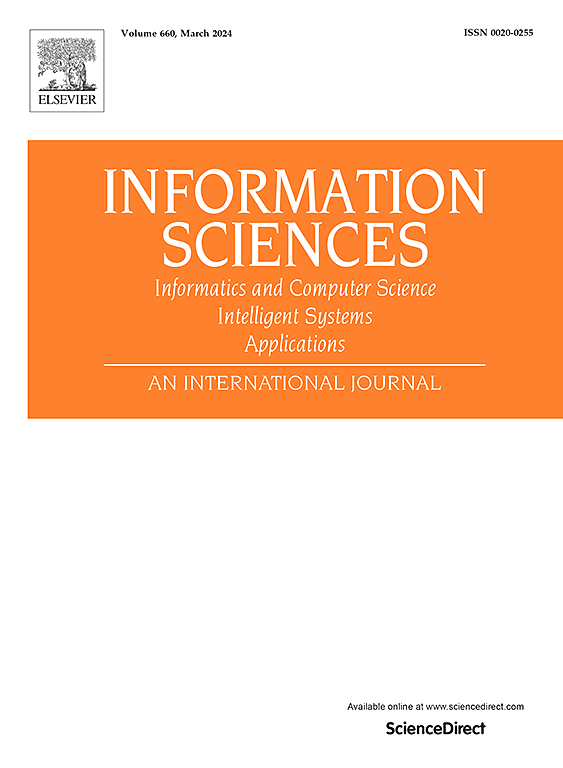基于双曲表示和标签-上下文交互的细粒度实体类型
IF 6.8
1区 计算机科学
0 COMPUTER SCIENCE, INFORMATION SYSTEMS
引用次数: 0
摘要
细粒度实体类型(Fine-grained entity typing, FET)是自然语言处理(natural language processing, NLP)中的一项重要任务,其目的是根据上下文为实体分配详细的类型标签。准确的实体类型对于许多下游应用程序是必不可少的,例如知识图构建、信息检索和问题回答。然而,现有的FET方法在捕获实体类型的层次结构和有效利用上下文信息方面面临重大挑战。许多先前的方法要么依赖于标签共现统计,这可能会引入噪声,要么利用双曲空间,这在超细实体中表现良好,但在粗粒度实体类型中表现不佳。此外,缺乏有效的标签-上下文交互限制了模型过滤不相关类型标签的能力,导致实体类型性能次优。为了解决这些问题,我们提出了一个新的FET框架,该框架集成了双曲表示和标签-上下文交互。首先,我们将实体标签的层次结构映射到双曲空间,从而允许更有效地表示类型关系。然后使用图卷积网络(GCN)对标签依赖关系建模,同时过滤掉噪声共现信息。此外,我们引入了一个使用注意机制的标签-上下文交互模块,通过建模上下文和标签之间的语义相关性来优化类型选择。该机制动态地增强了所选类型标签的相关性,同时降低了噪声。在多个公共数据集上的实验证明了双曲表示与标签-上下文交互相结合对FET的有效性。本文章由计算机程序翻译,如有差异,请以英文原文为准。
Fine-grained entity typing based on hyperbolic representation and label-context interaction
Fine-grained entity typing (FET) is a crucial task in natural language processing (NLP), which aims to assign detailed type labels to entities based on context. Accurate entity typing is essential for many downstream applications, such as knowledge graph construction, information retrieval, and question answering. However, existing FET methods face significant challenges in capturing the hierarchical structure of entity types and effectively leveraging contextual information. Many prior approaches either rely on label co-occurrence statistics, which may introduce noise, or utilize hyperbolic space, which performs well for ultra-fine entities but struggles with coarse-grained entity types. Furthermore, the lack of effective label-context interaction limits the model's ability to filter out irrelevant type labels, leading to suboptimal entity typing performance. To address these issues, we propose a novel FET framework that integrates hyperbolic representation and label-context interaction. First, we map the hierarchical structure of entity labels into hyperbolic space, allowing for a more effective representation of type relationships. A graph convolutional network (GCN) is then employed to model label dependencies while filtering out noisy co-occurrence information. Additionally, we introduce a label-context interaction module using attention mechanism to refine type selection by modeling semantic correlations between context and labels. This mechanism dynamically enhances the relevance of selected type labels while mitigating noise. Experiments on multiple public datasets demonstrate the effectiveness of combining hyperbolic representation with label-context interaction for FET.
求助全文
通过发布文献求助,成功后即可免费获取论文全文。
去求助
来源期刊

Information Sciences
工程技术-计算机:信息系统
CiteScore
14.00
自引率
17.30%
发文量
1322
审稿时长
10.4 months
期刊介绍:
Informatics and Computer Science Intelligent Systems Applications is an esteemed international journal that focuses on publishing original and creative research findings in the field of information sciences. We also feature a limited number of timely tutorial and surveying contributions.
Our journal aims to cater to a diverse audience, including researchers, developers, managers, strategic planners, graduate students, and anyone interested in staying up-to-date with cutting-edge research in information science, knowledge engineering, and intelligent systems. While readers are expected to share a common interest in information science, they come from varying backgrounds such as engineering, mathematics, statistics, physics, computer science, cell biology, molecular biology, management science, cognitive science, neurobiology, behavioral sciences, and biochemistry.
 求助内容:
求助内容: 应助结果提醒方式:
应助结果提醒方式:


